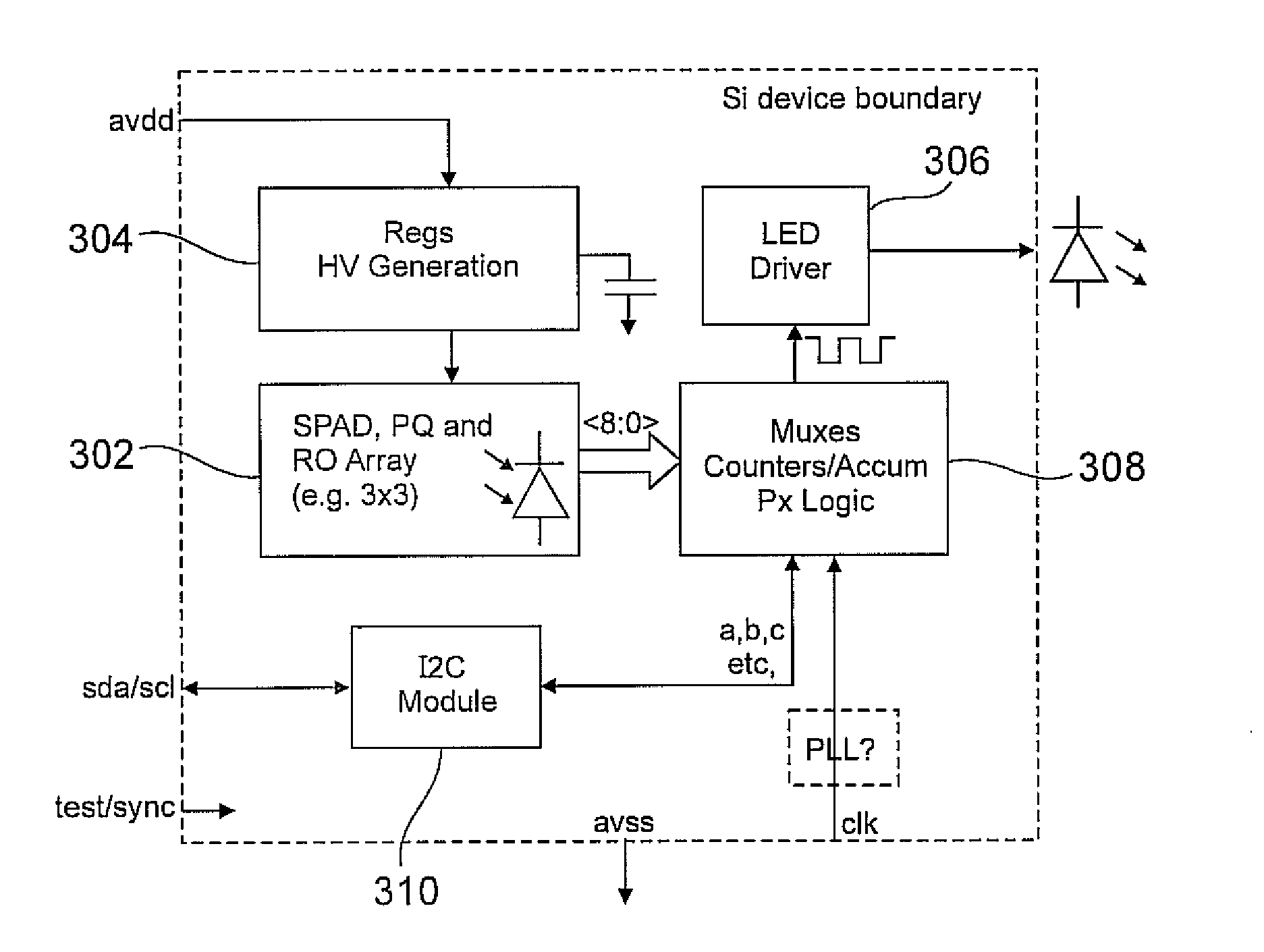Input device and associated method
a technology of input device and input method, which is applied in the direction of input/output process of data processing, instruments, electric digital data processing, etc., can solve the problems of reducing the accuracy of users, self-sustaining avalanche, and fundamental limitations of touch screen technology in the accuracy which users can achieve, so as to provide mouse style control and accuracy
- Summary
- Abstract
- Description
- Claims
- Application Information
AI Technical Summary
Benefits of technology
Problems solved by technology
Method used
Image
Examples
Embodiment Construction
[0036]A SPAD can be used as in a ranging application through the application of a Phase Shift Extraction Method for range determination, although alternative methods exist for range determination using SPADs based on direct time of flight measurement. The term ranging in this application is intended to cover all ranging devices and methods including by not limited to ranging devices, proximity devices accelerometers etc. Ranging can occur in a number of applications, including proximity detection which is relative easy to implement and inexpensive. Laser ranging which is more complex and costly than a proximity detector, and three-dimensional imaging which is a high-end application that could be used to recognize gestures and facial expressions.
[0037]A proximity sensor is the most basic of the ranging applications. At its simplest the sensor is capable of indicating the presence or absence of a user or object by detecting the presence or absence of a reflected signal. Additional com...
PUM
 Login to View More
Login to View More Abstract
Description
Claims
Application Information
 Login to View More
Login to View More - R&D
- Intellectual Property
- Life Sciences
- Materials
- Tech Scout
- Unparalleled Data Quality
- Higher Quality Content
- 60% Fewer Hallucinations
Browse by: Latest US Patents, China's latest patents, Technical Efficacy Thesaurus, Application Domain, Technology Topic, Popular Technical Reports.
© 2025 PatSnap. All rights reserved.Legal|Privacy policy|Modern Slavery Act Transparency Statement|Sitemap|About US| Contact US: help@patsnap.com



